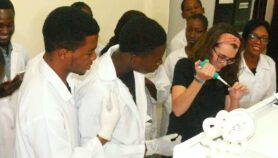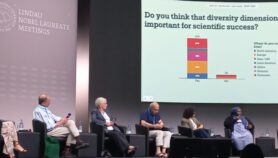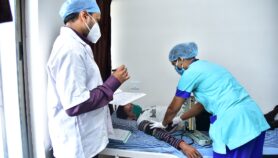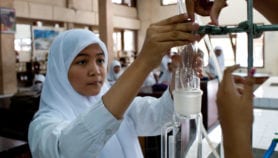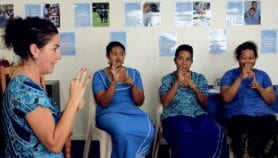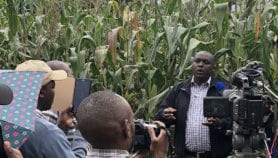By: Seth Berkley
Send to a friend
The details you provide on this page will not be used to send unsolicited email, and will not be sold to a 3rd party. See privacy policy.
Health research partnerships do more for development than just tackling illness, argues AIDS vaccine R&D leaderSeth Berkley.
Science, technology and innovation (ST&I) are increasingly a focus for discussions about how to achieve economic and human development in low- and middle-income countries.
This emphasis on science marks an important shift in thinking and holds great promise for overcoming seemingly intractable barriers to improving life for millions of the world’s poor.
As policymakers look to ST&I strategies to spur economic growth, they should consider the enormous promise of global health research and development (R&D) — and the product development partnership (PDP) model in particular.
Removing barriers to growth
Global health R&D has much to contribute when it comes to reducing barriers to economic growth.
Many of the health improvements in the developing world in the previous century were driven by drugs and vaccines. For example, oral rehydration therapy — a simple solution of salts and sugars that is highly effective in treating dehydration associated with infectious diarrhoea — saved more than 3 million lives per year from 1979 to 1999.
And a vaccine against smallpox eradicated the devastating disease by 1979, preventing an estimated 10-15 million infections each year in the developing world and saving $1.35 billion in global control measures.
Yet despite these improvements, disease continues to impede economic growth throughout the developing world. HIV/AIDS, malaria and tuberculosis alone reduce the annual rate of growth in hard-hit countries by up to 1.5, 1.3 and 0.5 per cent respectively. We need more effective technologies to better diagnose, treat and prevent diseases of poverty.
But health research and development can do more than just tackle illness. It can also strengthen scientific and technological capacities and, over the longer term, help diversify local economies, create jobs, stimulate economic growth and reduce poverty.
Partnerships for development
For example, when the Swiss drug maker Novartis invested in a local Kenyan firm to cultivate the active ingredient in its anti-malaria drug Coartem, it employed 7,500 farmers in East Africa, as well as helped create high-tech production facilities in Kenya and Uganda. East African Botanicals, the Kenyan firm, also attracted additional investors and expanded its business.
Similar cases can be found throughout the developing world. Non-profit product development partnerships, such as the International AIDS Vaccine Initiative (IAVI), which I lead, are particularly effective in optimising the development gains from global health R&D.
Product development partnerships work closely with academia, industry, donors and developing country partners. The aim is to develop new health tools and ensure widespread access to these products by keeping prices low and ensuring rapid delivery.
Such partnerships have developed and licensed at least 12 new products in the past decade, including a Japanese encephalitis vaccine and an oral cholera vaccine. More than 150 other products are in the pipeline.
And beyond the products themselves, the way these partnerships develop new health technologies can also support economic development in poorer countries by fostering scientific and technological capacities.
Growth from good health
Because much of the research and testing for new health technologies must be conducted in disease-endemic countries, product development partnerships work very closely with developing country scientists and clinicians.
For example, IAVI has trained more than 1,000 workers in Sub-Saharan Africa and India in the WHO’s Good Clinical and Laboratory Practice Guidelines. It also supports developing country institutions that employ hundreds of scientific workers by conducting joint research projects and investing in laboratory equipment and facilities.
IAVI has also built a network of clinical research centres staffed by local researchers across Sub-Saharan Africa to test HIV vaccine candidates and to study how best to design future vaccine candidates and trials.
Many of those researchers also participate in IAVI’s global research networks, and their contributions have been crucial in advancing HIV vaccine design and development.
The Drugs for Neglected Disease Initiative, another product development partnership, established the Leishmaniasis East Africa Platform (LEAP) in 2003. This is a regional clinical research network that brings together scientists from Ethiopia, Kenya, Sudan and Uganda to develop new, more effective, low-cost and easier-to-use treatments.
LEAP also works with local communities to upgrade existing hospitals, clinics and laboratories, research good standards in clinical practice, and enhance local health workers’ skills through training in laboratory practices, ethics, diagnosis, patient evaluation and clinical trial methodology.
Such investments and partnerships can help developing countries accelerate the search for new health tools, ensure researchers and policymakers can participate more directly in the global effort to combat diseases of poverty, and secure future access to new products by cultivating a sense of country ownership. This approach also builds local scientific capacity to absorb, use and develop new technologies.
Multiplied across more than two dozen existing product development partnerships, this model for global health R&D holds the potential to enhance both health and wealth in developing countries.
Seth Berkley is president and CEO of the International AIDS Vaccine Initiative based in New York, United States.
More on Capacity building
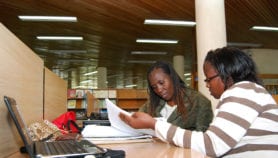
Script media release
Journalists offered ‘big break’ mentoring opportunity from Radio Nigeria
03/04/19






